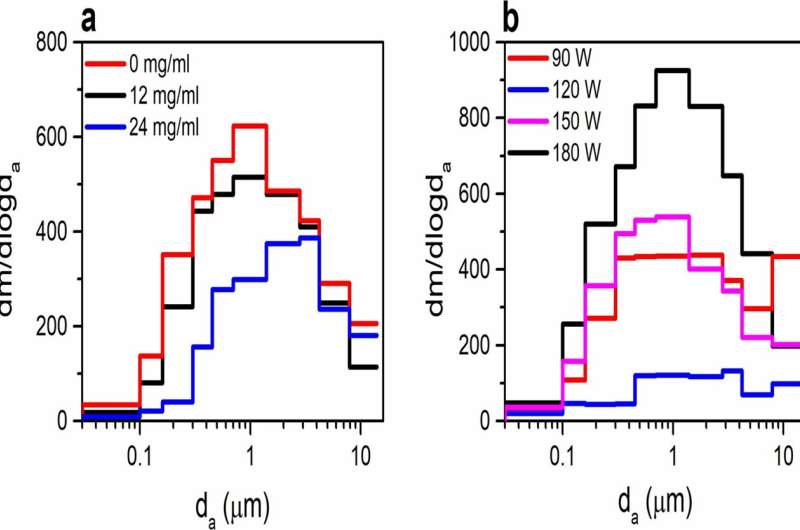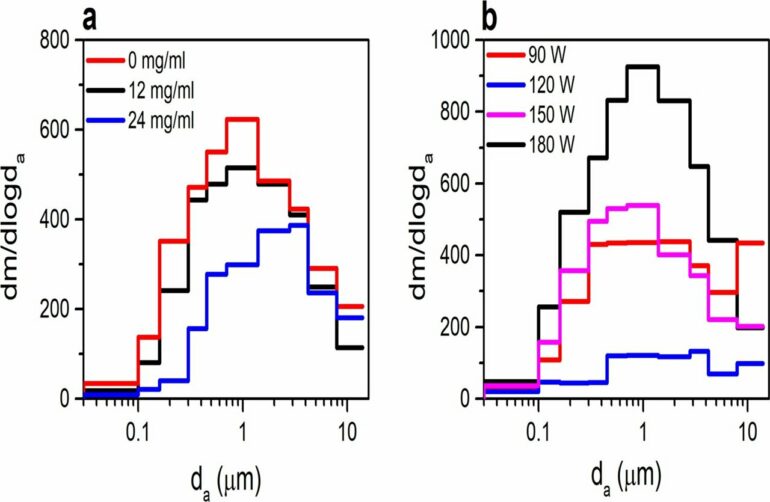The use of electronic cigarettes is increasing, especially among young people. In the U.S., outbreaks of lung injury and other respiratory illnesses and deaths associated with vaping have been reported, but the short- and long-term health implications are largely unknown.
In a new study in Nature Scientific Reports, CUNY SPH alumni Karina Castillo and Miranda Hogan, along with Professor Ilias Kavouras and colleagues, suggest e-cigarette users may be exposed to unsafe and potentially unhealthy levels of particulate matter in flavored refill liquids.
The size and chemical content of particles in electronic cigarette vapors (e-vapors) dictate their fate in the human body, the researchers say. Understanding how particles in e-vapors are formed and their size is critical to identifying and mitigating the adverse consequences of vaping. Thermal decomposition and reactions of the refill liquid components play a key role in new particles formation.
The researchers observed the evolution of particle number concentration in e-vapors over time for variable mixtures of refill liquids and operating conditions. Two events of increasing particle number concentration were observed, a first two to three seconds after puff completion and a second four to five seconds later.
The intensity of each event varied by the abundance of propylene glycol, glycerol, and flavorings in e-liquids. Propylene glycol and glycerol were associated with the first event. Flavorings containing aromatic and aliphatic unsaturated functional groups were strongly associated with the second event and to a lesser extent with the first one.

Normalized particle mass size distribution of e-vapors from (a) menthol flavored e-liquids of 0, 12, and 24 mg/ml nicotine concentrations (at 180 W) and (b) tobacco flavored e-liquids at 90, 120, 150 and 180 W (24 mg/ml nicotine content) using the 10-stage real time QCM cascade impactor. Experiments were carried out using a 2 s puff and 15 s wait time (n = 16). QCM Quartz crystal microbalance, mg/mL milligrams per milliliter, μm micrometer, W watts. © Scientific Reports (2022). DOI: 10.1038/s41598-022-21798-w
There was a stronger dependence of the quantity of particles in e-vapors with the relative abundance of propylene glycol, glycerol and flavorings and to a lesser extend with nicotine content and applied voltage.
“These findings support the need to develop strategies to discourage vaping by new users, adults, adolescents and children and to regulate the manufacture and content of electronic cigarettes used as a smoking cessation tool,” Kavouras says.
More information:
Oluwabunmi Dada et al, Evidence for the coupling of refill liquids content and new particle formation in electronic cigarette vapors, Scientific Reports (2022). DOI: 10.1038/s41598-022-21798-w
Provided by
The City University of New York
Citation:
Vaping exposes users to harmful levels of particulate matter, study suggests (2022, November 10)



